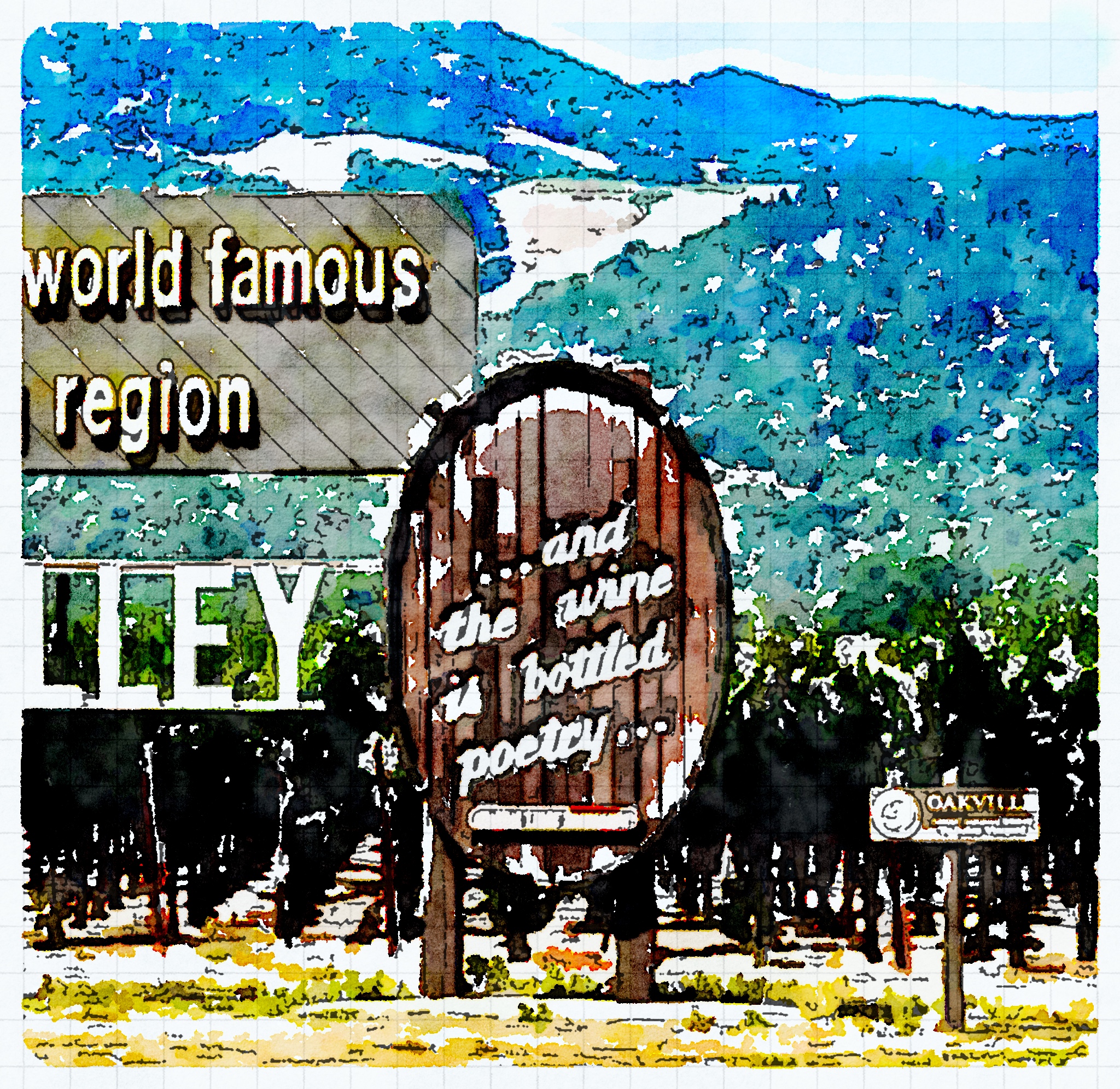Where Wine is Bottled Poetry

My recent blog post, “Witnessing the Rebirth of Livermore Valley Wine Country,” received some commentary from a reader who questioned my statement that, “Napa and Sonoma had been producing wine for much longer, but without the success of Livermore’s pioneering wineries.” How, the reader argued, could I deny that Napa wasn’t successful from its beginning? After all, didn’t Robert Louis Stevenson write, “and the wine is bottled poetry?” And wasn’t Stevenson writing about his visit to Napa in 1880 – a decade before Livermore exploded onto the world stage?
It’s hard to miss the billboard heading north from Oakville displaying the Stevenson “bottled poetry” quotation in bold letters. And it is almost impossible not to get goose bumps, as the sign sits upon some of the most fabled vineyard land in the world. It is hallowed ground for wine lovers. I have to admit that many of the modern wines from these vineyards are, indeed, bottled poetry.
But the quotation in question does not refer to the wines of Napa Valley. The phrase appears in a short work called Silverado Squatters, which describes Stevenson’s honeymoon experiences in the Napa Valley in 1880. Stevenson was looking out upon the barren landscape near St. Helena after having visited a few of the local wineries, and was mourning the loss of the great wines of France from the scourge of phylloxera. He was expressing the pain of the loss of French wines, and wondering whether, through hard work and risk taking, it would be possible to turn the rugged California landscape into vineyard land equal to the legendary chateaus of Bordeaux.
A problem with quotations is that their true meaning is often obscured because they are isolated from context. This is why I have included Stevenson’s complete thought containing “bottled poetry” at the end of this posting. It is hard to believe that this passage was written over 130 years ago; Robert Louis Stevenson is writing as if it were today. He is prescient in describing the next century in Napa Valley, as future winegrowers would risk all to gradually turn the “chaparral” covered land into productive vineyards.
What Stevenson could not be aware of was that 90 miles to the south, pioneers were busy turning the Livermore Valley into the vineyard land he was imagining. With pioneers like Wetmore, Ghier, Wente, and Concannon trying “with one kind of grape after another,” Livermore Valley was, by Stevenson’s methods, establishing the foundation for modern winemaking in California.
Excerpt From: Robert Louis Stevenson. “The Silverado Squatters.”
“Wine in California is still in the experimental stage; and when you taste a vintage, grave economical questions are involved. The beginning of vine-planting is like the beginning of mining for the precious metals: the wine-grower also “Prospects.” One corner of land after another is tried with one kind of grape after another. This is a failure; that is better; a third best. So, bit by bit, they grope about for their Clos Vougeot and Lafite. Those lodes and pockets of earth, more precious than the precious ores, that yield inimitable fragrance and soft fire; those virtuous Bonanzas, where the soil has sublimated under sun and stars to something finer, and the wine is bottled poetry: these still lie undiscovered; chaparral conceals, thicket embowers them; the miner chips the rock and wanders farther, and the grizzly muses undisturbed. But there they bide their hour, awaiting their Columbus; and nature nurses and prepares them. The smack of Californian earth shall linger on the palate of your grandson.”
Excerpt From: Robert Louis Stevenson. “The Silverado Squatters.” iBooks. https://itun.es/us/FHGUD.l”


